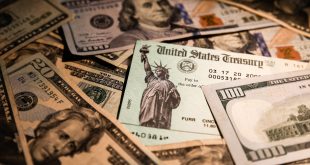The spotlight now shifts to the European Central Bank following Wednesday’s rate hike in the United States. Building permits data from New Zealand, trade balance data from Australia, and the Chinese Caixin Manufacturing PMI are all scheduled to be released during the Asian trading session.
Key Developments
Interest rates increased by 25 basis points, as anticipated, to 5.00–5.25%, the highest level since 2007. The FOMC also withdrew its forecast for future rate increases, but it said that the timing of those changes will depend on the arrival of new economic data. The bias is still in favour of tightening even more. There was little impact on the currency market.
The Fed has achieved its dot-plot guidance from last December and revised as of March with the Fed funds target range of 5.00-5.25%. The following action is a pause. A full stop requires proof that employment declines and inflation pressures (rents in particular) decrease.
The US Dollar was under pressure as Wall Street equities closed lower and US bond yields continued to fall. The US Dollar Index (DXY) finished at 101.35, above recent lows but being at its lowest point in a week. The US 10-year yield, meanwhile, fell to a one-month low of 3.36%.
Economic Data
On Thursday, the US will publish data on weekly Jobless Claims and Unit Labour Costs for the first quarter. Private payrolls increased by 296K in April, exceeding forecasts, according to the ADP Employment report. The market’s response to the news was modest, though, as traders awaited Friday’s nonfarm payrolls report.
The forthcoming European Central Bank (ECB) meeting is the current topic of discussion. A 25 basis point rate increase is anticipated, although a 50 basis point increase is also feasible. The meeting’s conclusion will probably cause the euro to move. Following the FOMC statement, the EUR/USD pair moved towards 1.1100 before reversing course to 1.1050. The pair is still optimistic even with its limited upside.
The GBP/USD pair rose to its highest intraday levels since June, coming close to 1.2600 before dipping a little. The tendency is upward. The second day in a row that USD/JPY has fallen further is due to lower US rates and a drop in Wall Street equity prices. It has lost more than 200 pips during the last two days, reaching three-day lows at 134.82.
The AUD/USD pair increased for a third day in a row, but it was unable to remain above 0.6700, showing that it is not yet prepared for a bullish breakout. It is still far from the recent lows, though. Both the Caixin China Manufacturing PMI and the Australian trade figures are due on Thursday.
NZD/USD continued to edge higher, reaching two-week highs at 0.6260. The Kiwi outperformed CAD and AUD following positive labour market data from New Zealand. Market participants expect the Reserve Bank of New Zealand (RBNZ) to raise rates again at the next meeting on May 24.
In the Financial Stability Report, the RBNZ stated that the national financial system is well-positioned to deal with rising interest rates and global risks.
Crude oil retreated once more, this time by more than 4%. WTI closed near $68.00 at its lowest level since mid-March. Gold rallied further and maintained its price well above $2,000; it peaked up and is currently trading around its year-to-date high of $2,050. Gold is precisely trading at $2,048.53 at the time of typing. Although more modestly, silver also increased, rising to $25.50. On Wednesday, cryptocurrencies declined, with BTC/USD dropping 1% to $28,350.
Also Read:
PacWest one more US bank faces trouble
US stocks fall as traders monitor Fed’s next moves
Powell explains grounds of Fed’s dovish stance
Breaking: Fed hikes policy rate by 25 bps to 5-5.25% as expected
EUR/USD rebounds ahead of Fed, ECB policy decisions
 Noor Trends News, Technical Analysis, Educational Tools and Recommendations
Noor Trends News, Technical Analysis, Educational Tools and Recommendations





